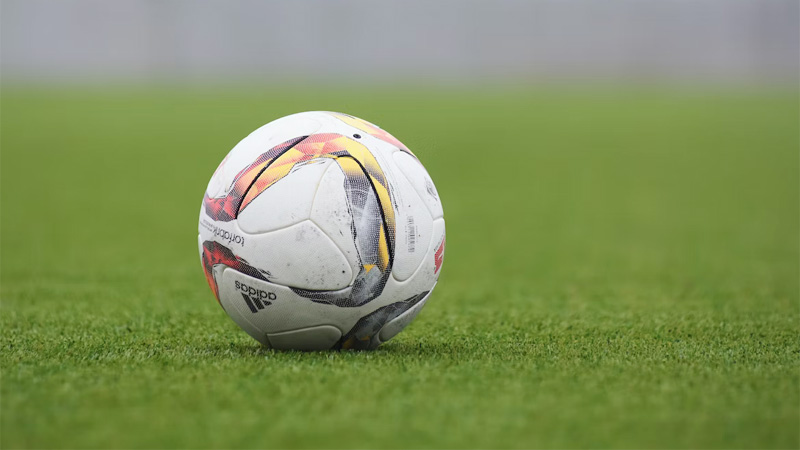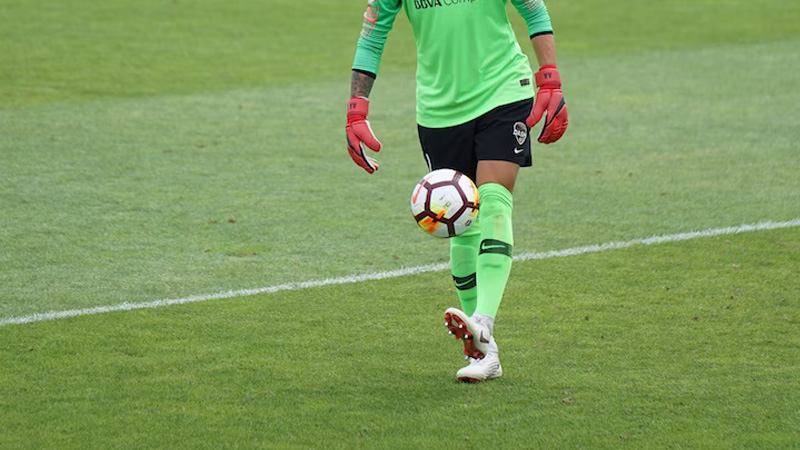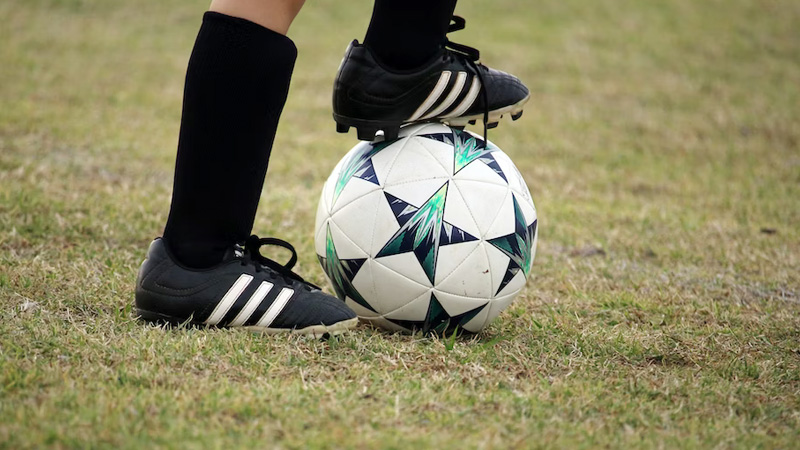Soccer, the beautiful game, is a sport teeming with moments of excitement, skill, and strategic brilliance. Amidst the fluidity of the game, certain situations arise that bring a temporary pause to the action – the soccer dead ball rules.
These rules govern the various scenarios when the ball is not in active play, ranging from out-of-bounds situations to fouls, injuries, substitutions, and offside offenses.
Understanding the intricacies of soccer dead ball rules is essential for players, coaches, and officials, as they dictate how play restarts and how teams can leverage these moments strategically.
Whether it’s a free kick, corner kick, goal kick, or throw-in, each dead ball situation offers opportunities for both attacking and defending teams to make a difference on the field.
In this article, we delve into the nuances of soccer dead ball rules, exploring the significance they hold in the ebb and flow of the game.
Soccer Dead Ball Rules
In soccer, dead ball rules govern situations when the ball is not in active play, often due to the referee’s decision or specific circumstances during a match.
Understanding these rules is crucial for players, coaches, and fans, as they dictate how play resumes and how certain incidents are addressed.
Here’s a breakdown of soccer dead ball rules:
Out of Bounds
One of the most common dead ball situations occurs when the ball goes out of bounds. If the entire ball crosses the touchline (sideline), the game is momentarily stopped, and the opposing team is awarded a throw-in from the spot where the ball went out. Similarly, if the ball crosses the goal line (end line) and is last touched by an attacking player, the defending team is granted a goal kick to restart the play.
Conversely, if the defending team touches the ball last, the attacking team receives a corner kick.
Fouls and Violations
When the referee detects a foul or violation, the game is halted, and the ball becomes dead. Common fouls include tripping, pushing, holding, and reckless challenges.
The type and location of the foul determine the restart method, which can be a direct or indirect free kick or even a penalty kick in the case of a foul committed inside the penalty area.
Offside
If an attacking player is in an offside position when the ball is played to them, the assistant referee raises the flag to indicate the offside offense.
The referee stops the game, and the ball becomes dead. The opposing team is awarded an indirect free kick from the spot where the offside occurred.
Injury or Medical Emergency
In the event of a player sustaining an injury or requiring medical attention, the referee can stop the game to ensure the player’s safety.
The ball becomes dead, and play resumes once the injured player is safely removed from the field or allowed to continue playing after treatment.
Substitutions
When a team wishes to make a substitution, the referee stops the game to allow the player being substituted to leave the field safely. The ball becomes dead during this process, and play resumes once the substitution is complete and the referee signals for the game to continue.
Soccer, dead ball rules, provide structure and fairness to the game, ensuring that certain situations are appropriately addressed and that play resumes correctly after temporary interruptions.
By understanding these rules, players, and teams can navigate the ebb and flow of the match while referees maintain control and uphold the principles of fair play.
Is A Dead Ball A Foul Ball?

No, a dead ball and a foul ball are two different terms used in different sports, and they refer to distinct situations.
In soccer, a “dead ball” refers to a situation when the ball is not in active play. The ball may become dead due to various reasons, such as going out of bounds, a foul being called, an offside offense, an injury stoppage, or during substitutions.
When the ball is dead, the game is temporarily paused, and play does not continue until the referee signals for it to resume.
On the other hand, in baseball, a “foul ball” is a specific type of ball that is hit by the batter during an at-bat.
A foul ball is a batted ball that does not land within the field of play and travels outside the baseline markers, typically landing in the stands or beyond the playing area.
A foul ball is considered neither a strike nor an out, and the at-bat continues until the batter hits a fair ball, strikes out, or reaches base through other means (e.g., walk or hit-by-pitch).
In summary, a “dead ball” in soccer is when the ball is not in active play due to various factors, and it occurs while the game is ongoing. A “foul ball” in baseball is a specific type of batted ball that goes outside the field of play, and it pertains to a specific play during a baseball game.
What Do Players Do When There Is A Dead Ball?

When a dead ball occurs in soccer, players must respond accordingly to the situation at hand.
A dead ball signifies a temporary pause in the game, and players’ actions during this period can vary depending on the specific reason for the stoppage.
Here’s what players typically do when there is a dead ball:
Reset and Regroup
When the ball goes out of bounds, or a foul is called, players use the dead ball time to reset and regroup.
The team with possession might plan their next move, while the defending team reorganizes their defensive shape to prepare for the upcoming restart.
Positioning for Free Kicks
If a foul is committed, the opposing team is awarded a free kick. Players from both teams use the dead ball time to set up for the free kick.
The attacking team may strategize their play, while the defending team arranges their wall and defensive positions to block or intercept the kick.
Injury Assessment
In the case of an injury or medical emergency, players may gather around the injured teammate or move away to give space to medical personnel.
They show concern for the well-being of their teammate while waiting for medical attention.
Making Substitutions
When a team wants to make a substitution, the players involved in the substitution process prepare to enter or exit the field.
The player being substituted leaves the field at the nearest boundary while the substitute waits at the halfway line for the referee’s signal to enter the game.
Resuming Play
Once the reason for the dead ball is resolved, the referee signals for play to resume. Players get back into their positions, and the team, with the restart, carries out the appropriate action, such as taking a throw-in, corner kick, free kick, or goal kick.
Showing Sportsmanship
During a dead ball situation caused by an injury or a controversial play, players may take the opportunity to exhibit sportsmanship by checking on opponents or offering apologies for accidental fouls.
Overall, players use the time during a dead ball to gather their thoughts, adjust their tactics, and prepare for the game to resume.
Dead ball situations provide brief respites in the fast-paced nature of soccer, allowing players to strategize and respond to the circumstances that arise during a match.
Is The Ball Dead On A Substitution?
Yes, in soccer, the ball is considered dead during a substitution. When a team wishes to make a substitution, the player being substituted must leave the field of play before the substitute can enter.
The substitution process is a dead ball situation, meaning that the game is momentarily paused until the substitution is complete.
Here’s how the substitution process works:
Signal from Referee
Before a substitution can take place, the team that wishes to make the substitution must notify the match referee.
The referee may also signal for the substitution if a stoppage in play occurs and the team indicates their intention to make the change.
Leaving the Field
The player who is being substituted must leave the field at the nearest boundary line, usually near the halfway line. They are required to leave the field promptly to avoid any time-wasting.
Entry of Substitute
Once the player being substituted has left the field, the substitute can enter the field. The substitute must enter the field from the halfway line, and the referee must signal for them to come on.
Play Resumes
After the substitution is complete and the substitute has entered the field, the referee signals for play to resume.
The ball is put back into play according to the appropriate restart method, such as a throw-in, free kick, goal kick, or corner kick, depending on the situation before the substitution.
During the substitution process, players may use the dead ball time to adjust their tactics, take a quick breather, or communicate with their teammates.
Substitutions are a tactical aspect of the game, allowing teams to bring on fresh legs or make strategic changes to influence the match’s outcome.
FAQ
What is a dead ball in soccer?
In soccer, a “dead ball” refers to a moment during the game when the ball is not in active play. This occurs when the referee stops the game due to various reasons, such as the ball going out of bounds, a foul or violation being committed, an offside offense, an injury or medical emergency, or during player substitutions.
What happens during a dead ball situation in soccer?
During a dead ball situation in soccer, players use the time to regroup, adjust tactics, and prepare for the game to restart. The team with possession might plan their next move, while the defending team reorganizes its defensive shape.
Can goals be scored directly from dead-ball situations?
Yes, goals can be scored directly from certain dead ball situations. For example, during a direct free kick, a player can shoot directly at the goal without the ball touching another player before entering the net.
Can a player be substituted during a dead ball situation?
Yes, substitutions can be made during dead ball situations. When a team wishes to make a substitution, the player being substituted must leave the field at the nearest boundary line, usually near the halfway line.
Can a player receive a card during a dead ball situation?
Yes, a player can receive a yellow or red card from the referee during a dead ball situation. If a player commits a foul or violates the rules during a dead ball, the referee can issue a card even when the ball is not in active play.
Conclusion
The soccer dead ball rules, an indispensable aspect of the game, offer fascinating opportunities for teams to showcase their tactical acumen and prowess. The brief pauses in play during dead-ball situations allow players to regroup, strategize, and seize moments of advantage.
Whether it’s an expertly executed free-kick that finds the back of the net or a resolute defensive wall thwarting an opponent’s corner kick, these moments can be game-changers.
Mastering the art of dead ball situations is a testament to a team’s cohesion, understanding of the game’s dynamics, and ability to seize the right opportunities.
As soccer enthusiasts revel in the thrill of each match, it is the adept execution of the soccer dead ball rules that adds an extra layer of excitement, unpredictability, and brilliance to the ever-enthralling spectacle that is the world’s most beloved sport.







